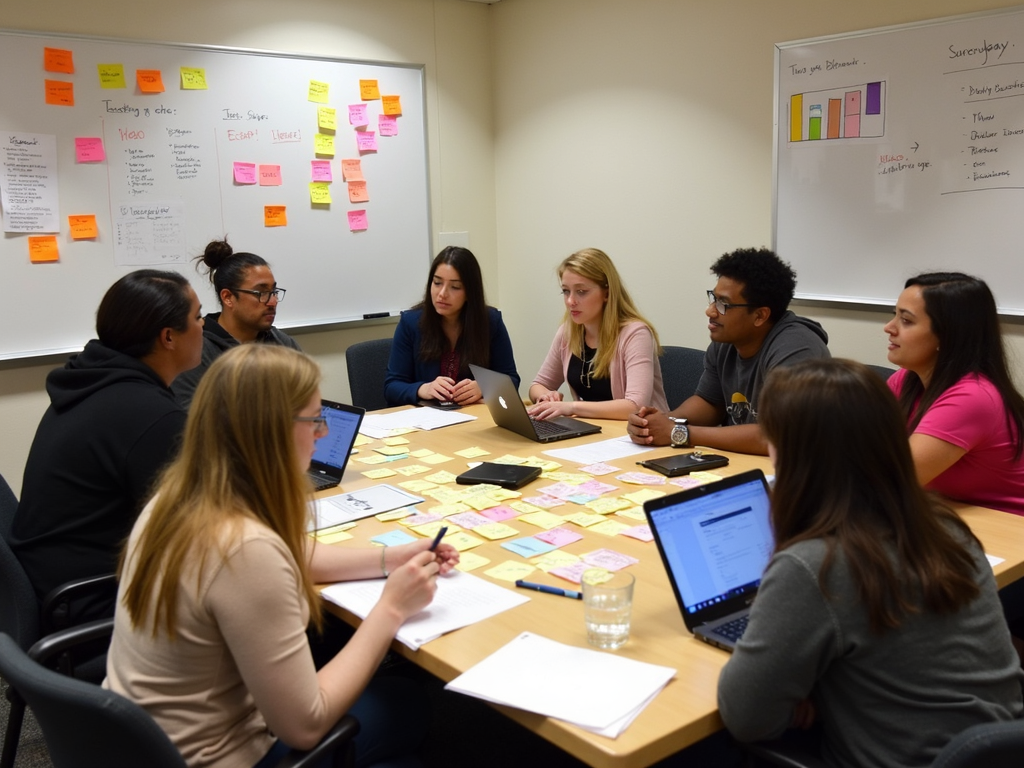How to Launch a Successful Advocacy Program
By , June 10, 2025
Overview
Advocacy programs are powerful tools for driving social change. They empower individuals and communities to influence public opinion and policy on issues that matter. Whether you're passionate about environmental conservation, social justice, or public health, launching a successful advocacy program can amplify your voice and create lasting impact. This guide will walk you through the essential steps to launch an effective advocacy program, from identifying your cause to evaluating your success.

Step 1: Identify Your Cause
The first step in launching a successful advocacy program is to identify a cause that resonates with you and your community. Your cause should be something you're passionate about and that has the potential to make a real difference. Consider the following when choosing your cause: - Relevance: Is this issue important to your community or target audience? - Impact: Can your efforts lead to meaningful change? - Feasibility: Do you have the resources and support to tackle this issue?
For example, if you're concerned about climate change, you might focus on advocating for renewable energy policies in your local area. The key is to choose a cause that you can commit to and that aligns with your values.
Step 2: Set Clear Goals
Once you've identified your cause, it's crucial to set clear, achievable goals. Your goals should be specific, measurable, and time-bound. This will help you stay focused and track your progress. Consider the following when setting your goals: - Short-term goals: What can you achieve in the next few months? - Long-term goals: What is your ultimate vision for change? - Metrics: How will you measure success? (e.g., number of volunteers recruited, policy changes enacted)
For instance, a short-term goal might be to recruit 50 volunteers within three months, while a long-term goal could be to pass a local ordinance supporting your cause within a year.

Step 3: Build a Team of Volunteers
A successful advocacy program relies on a dedicated team of volunteers. These individuals should be passionate about the cause and bring diverse skills to the table. When building your team, consider the following: - Recruitment: Use social media, community events, and word-of-mouth to find volunteers. - Roles: Assign roles based on skills and interests (e.g., social media manager, event coordinator). - Training: Provide training to ensure everyone understands the program's goals and strategies.
Remember, volunteers are the backbone of your program. Treat them with respect, recognize their contributions, and create a supportive environment where they can thrive.
Step 4: Develop a Strategy
With your team in place, it's time to develop a strategy for achieving your goals. Your strategy should outline the actions you'll take, the timeline, and the resources needed. Consider the following elements: - Tactics: What methods will you use to advocate for your cause? (e.g., petitions, rallies, social media campaigns) - Timeline: When will each action take place? - Resources: What do you need to execute your plan? (e.g., funding, materials, partnerships)
A well-thought-out strategy will keep your program on track and help you adapt to challenges along the way.

Step 5: Engage Stakeholders
Engaging stakeholders is critical to the success of your advocacy program. Stakeholders include policymakers, community leaders, media, and other influential individuals or groups. To effectively engage stakeholders: - Identify key players: Who has the power to influence your cause? - Build relationships: Attend meetings, send emails, and make phone calls to establish connections. - Communicate your message: Clearly articulate your goals and why their support matters.
For example, if your advocacy program focuses on education reform, engaging school board members and local politicians can be crucial to gaining support.
Step 6: Implement the Program
Now that you have a strategy and stakeholder support, it's time to implement your program. This phase involves executing your planned actions, monitoring progress, and making adjustments as needed. Key considerations include: - Coordination: Ensure all team members know their roles and responsibilities. - Communication: Keep volunteers and stakeholders informed of progress and any changes. - Flexibility: Be prepared to adapt your strategy if circumstances change.
Implementation can be challenging, but staying organized and maintaining open communication will help you navigate any obstacles.

Step 7: Evaluate and Reflect
After your program has been implemented, it's important to evaluate its impact and reflect on what you've learned. This will help you improve future advocacy efforts. Consider the following: - Assess outcomes: Did you achieve your goals? What metrics indicate success? - Gather feedback: Ask volunteers and stakeholders for their input on what worked and what didn't. - Document lessons learned: Use this information to refine your approach for future programs.
For instance, if your program successfully passed a new policy, celebrate that win and analyze what contributed to your success. If you fell short of your goals, identify areas for improvement.
Summary
Launching a successful advocacy program requires careful planning, a dedicated team, and a clear strategy. By following these steps—identifying your cause, setting goals, building a team, developing a strategy, engaging stakeholders, implementing your plan, and evaluating your impact—you can create meaningful change in your community. Remember, advocacy is a journey, and every step you take brings you closer to your vision for a better world.
